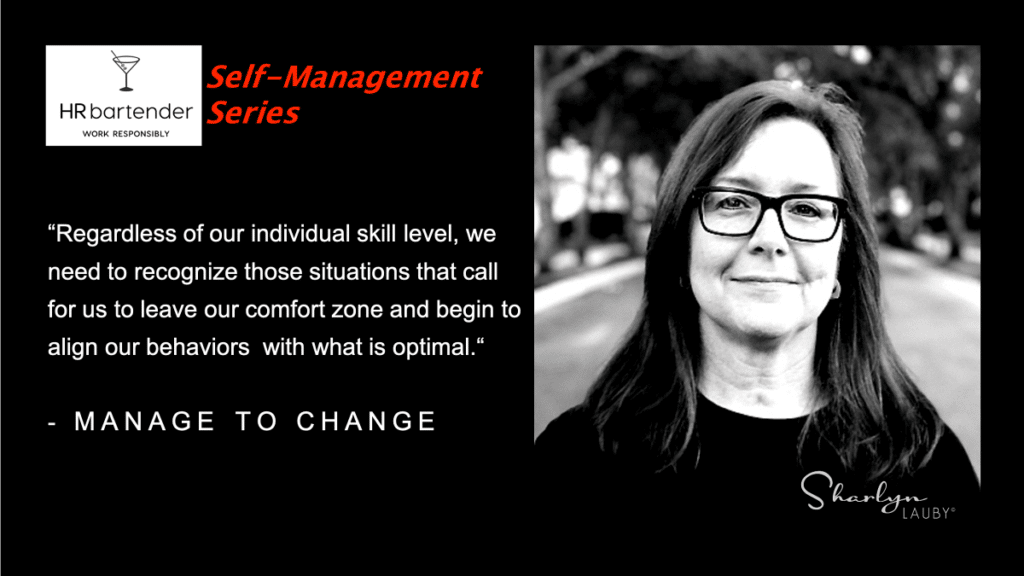Manage to Change – Part 6, Self Management Series
Estimated reading time: 3 minutes
Our last post in this series about the qualities of self-management for remote workers deals with change. I’m not talking about change management because that’s really an organizational process. It’s important, but it’s a process.
The idea behind “manage to change” lies in the ability of each individual to change as necessary. And that couldn’t be more relevant than right now. But, just in case you missed one, here’s a recap of the five qualities we’ve discussed so far:
#3 – Be a Part of the Solution
#4 – Handling Personality Conflicts
On some level, all of them deal with our ability to change. Whether it’s knowing ourselves, understanding others or handling difficult situations, there is a change component. The concept of “manage to change” focuses on our ability to effectively identify and make a change when needed. It’s about knowing ourselves and our circumstances well enough to know when a change is called for and what kind of change needs to be made. Here are two examples:
- It’s only natural to rely on our strengths. And our tendency might be when the going gets tough, to use our strengths because…well, they are our strengths. However, there are times when relying upon those strengths too much can turn those positive and productive behaviors into negative and self-defeating ones.
Let’s say a person is known for their ability to lead a group or project. One of their strengths is getting people and responsibilities organized, then helping the group maintain productivity. However, if the person always has to be in charge and is unable to participate without being in a leadership role, then their positive behavior becomes unproductive.
The way we can manage to change in the situation is by being cognizant of our strengths and aware of situations when we might be overusing them. This will prevent us from using our preferred behaviors to excess.
- The second example is when we use our strengths at the wrong time. A person who uses logical, systemic, analytical behavior is a great person to have on the team. But if the situation calls for listening to people and taking into account their feelings and emotions, then it might be considered inappropriate and insensitive to use logic and systemic reasoning at that time. In this instance, changing the approach to a more empathetic one would be more effective even though it may not be a preferred strength.
Regardless of our individual skill level, we need to recognize those situations that call for us to leave our comfort zone and begin to align our behaviors with what is optimal for the situation.
Whether we work in an office or remotely, today’s workplaces are becoming more social which, in turn, means they are becoming more personal. If we want to solve the business challenges of the future, the first step is being able to self-manage. The more we can manage to change, the greater our personal and professional potential.
24